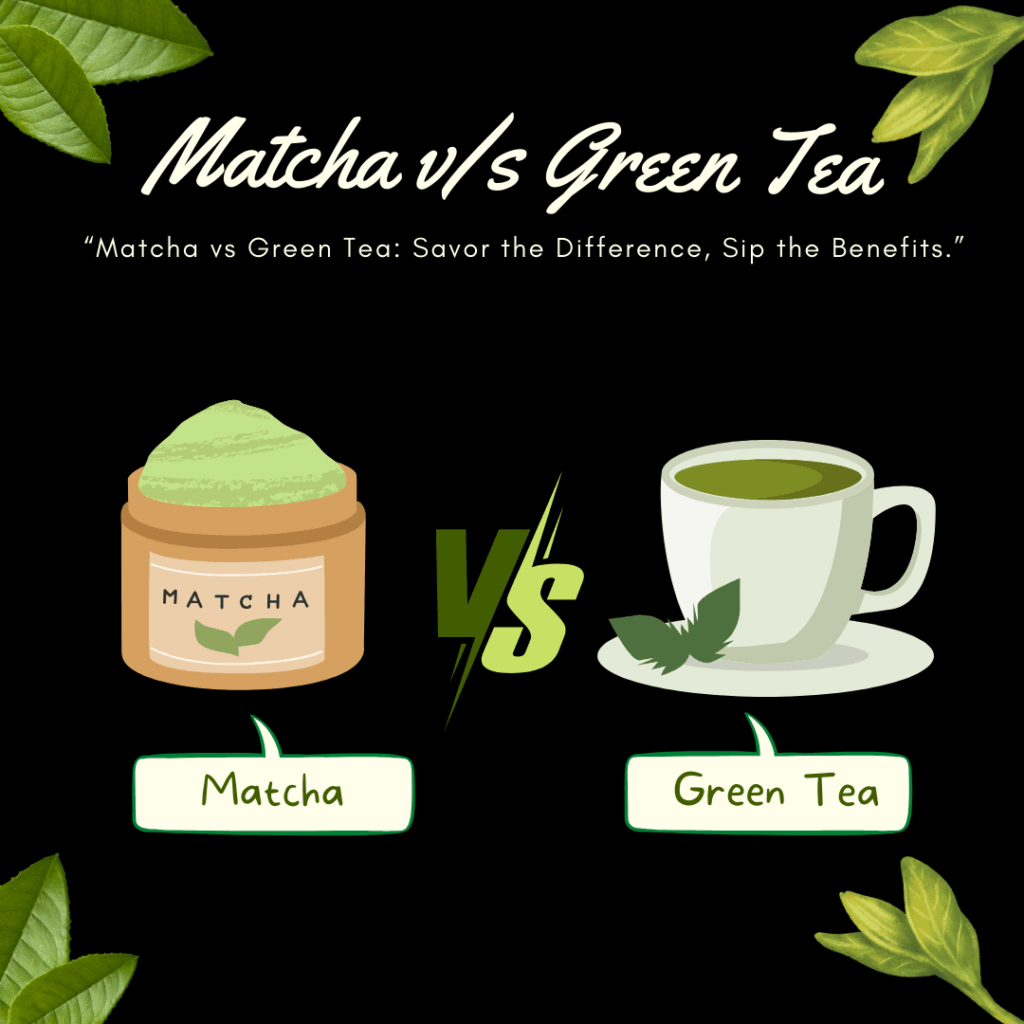1. Introduction: Matcha vs Green Tea
Matcha and green tea both originate from the Camellia sinensis plant, but their distinct processing methods, taste profiles, nutrient content, and wellness impacts have created strong fan followings worldwide. With wellness trends surging, understanding the nuanced differences between these two teas helps consumers make informed, results-driven choices for weight loss, metabolic health, and overall vitality.
2. What Are Matcha and Green Tea?
- Green Tea:
- Matcha:
- Cultivated from shade-grown Japanese tea plants, leading to higher chlorophyll, amino acid, and antioxidant levels.
- After harvest, leaves are de-stemmed, steamed, and stone-ground into a bright green powder.
- When whisked in hot water, you consume the whole leaf, maximizing nutrient intake.
- Often used in drinks, smoothies, lattes, and recipes.
3. Matcha vs Green Tea: Taste Profile
- Does Matcha Taste Like Green Tea?
- While both are derived from the same plant, flavor experience is noticeably different.
- Green tea is typically delicate, lightly grassy, or floral. A well-brewed cup is fresh, crisp, sometimes slightly astringent, and clear in color.
- Matcha is bold, rich, creamy, and umami-forward, with a unique vegetal “seaweed” note and a subtle, pleasing bitterness. The mouthfeel is thicker and silkier, and the color is vibrant green.
- Because matcha uses the whole leaf and higher leaf concentration, its taste is more intense, making it popular for lattes and desserts. Some find matcha’s flavor too strong or “green” without milk or sweetener, while others find it deeply nourishing.
4. How Are They Made? Why Processing Matters
- Green Tea Production
- Tea leaves are harvested, briefly steamed (Japanese) or pan-fired (Chinese) to halt oxidation, preserving green color and nutrients.
- Rolled, shaped, and air-dried leaves are steeped in hot water, infusing color and flavor but leaving solid leaf material behind.
- Brewing time and water temperature influence flavor and bitterness: lower temps (140–175°F) and shorter infusions (1–3 min) yield the best taste.
- Matcha Production
- Tea bushes are shaded for 3–4 weeks before harvest, enhancing chlorophyll, caffeine, and L-theanine levels.
- After picking, leaves are de-veined, de-stemmed, steamed, and finely stone-ground into powder.
- The powder dissolves in water; traditionally prepared with a bamboo whisk for froth and consistency.
- Since the entire leaf is consumed, the nutrient content is dramatically higher per serving.
5. Nutritional Showdown: Matcha vs Green Tea
6. Matcha vs Green Tea: Weight Loss & Insulin Effects
- Weight Loss
- Both teas are rich in catechins, especially EGCG (epigallocatechin gallate), a powerful antioxidant linked to increased calorie burn, reduced fat storage, and appetite regulation.
- Matcha offers a stronger dose per serving, so some research suggests it may provide an extra boost to metabolic rate and fat oxidation compared to regular green tea. Meta-analyses find consistent modest support for green tea as a fat burner, with matcha sometimes showing greater effects.
- Green tea is very accessible for daily sippers and can be enjoyed over several cups with gentle, sustained metabolic impact.
- Insulin Sensitivity & Blood Sugar
- Both teas help support healthy blood sugar by improving insulin sensitivity and reducing glucose spikes after meals.
- Matcha’s high concentration of antioxidants and polyphenols may confer even stronger glucose-regulating and anti-inflammatory effects promising for metabolic health and diabetes risk reduction.
- No tea is a cure-all, but incorporating either beverage as part of a balanced lifestyle can moderately aid weight management and metabolic health.
7. Unique Benefits of Each Tea
- Green Tea
- Helps reduce risk factors for heart disease and stroke by lowering cholesterol and blood pressure.
- Supports improved brain function, memory, and mental alertness.
- May protect against neurodegenerative diseases thanks to high antioxidant load.
- Aids in gut health and improves oral hygiene with antibacterial properties.
- Supports hydration with very few calories, making it ideal for weight management.
- Matcha
- Offers all green tea benefits in concentrated form, requiring smaller servings for equal (or greater) impact.
- Its L-theanine content may enhance calm focus and attention, counteracting caffeine “jitters.”
- Shown to reduce oxidative stress and inflammation, support vascular health, and may lower tumor growth factors in the gut.
- Highly versatile for culinary uses, from lattes to smoothies, desserts, and savory dishes.
- Considered a premium, ceremonial ritual in Japanese culture, enhancing mindfulness and intentional nourishment.
8. Choosing Between Matcha and Green Tea
- Who should choose green tea?
- Individuals seeking a low-caffeine, refreshing beverage for daily hydration and general health.
- People who enjoy a delicate, nuanced flavor profile.
- Those focused on cost-effectiveness without sacrificing antioxidant benefits.
- Who should choose matcha?
9. Pro Tips for Drinking Matcha and Green Tea
- Avoid boiling water; use 140–175°F for best taste and to prevent bitterness.
- Steep green tea briefly (1–3 minutes) and strain promptly.
- Matcha should be well-sifted and whisked use a bamboo whisk for smooth, frothy results.
- Try matcha with milk or non-dairy alternatives for lattes if the straight powder is too strong.
- Store powders and teas airtight, away from light, to preserve flavor and nutrients.

